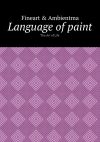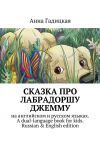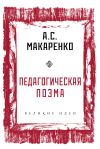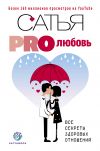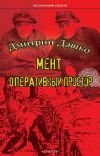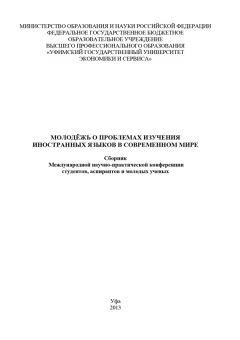
Автор книги: Коллектив Авторов
Жанр: Прочая образовательная литература, Наука и Образование
сообщить о неприемлемом содержимом
Текущая страница: 2 (всего у книги 10 страниц) [доступный отрывок для чтения: 2 страниц]
LANGUAGE UNIVERSALS
УДК 81’16-027.511=111
ELAEVA E.
Ufa State University of Economics and Service (Ufa)
Language is not only unique to humans and diverse but there are also common features between languages. About five thousand languages are spoken in the world today but there is a basic unity that underlies their diversities. Many of the world’s languages show similar principles. 'Language universals' are a set of principles which describe systematic patterns in languages – in other words they describe what the world's languages have in common. These language universals classify entire languages into categories which are then based on shared properties. There exist three approaches to explaining universals. These are namely the monogenesis, the innateness including other psychological explanations and the functional and pragmatic explanations. The term monogenesis means that there is a genetic origin which holds true for all languages of the world. The hypothesis is that there once existed and ancestor language from which all the languages of the world developed. This would also implicate that each of the universals have been part of the ancestor language and that they have passed on through all the stages the language went through. Authorities who speak about innateness are simply arguing that in the absence of any alternative coherent explanation for language universals, innateness is the only possibility that can be. Instead of serving to deepen our understanding of language universals, the absence of any possibility of testing innateness as an explanation serves rather to divert researchers from considering alternatives that may be testable [1]. The last approach is the one of the functional and pragmatic explanations. The argument concerning this approach is that through certain universals language becomes more functional. This contradicts the numerous instances where language seems to be dysfunctional. “The existence of synonyms seems to be a needless luxury and even more clearly the existence of homonyms…” [2].
There are so many linguistic features which the languages of the world share. Some are basic, such as the notion of ‘sentence’ or ‘verb,’ some are complex, such as Wh– movement. The rules which all languages have in common, with either very few, or no exceptions are called absolute universals. Let’s consider the following statements.
• All languages are equipped with the grammatical structures needed to give orders, negate a thought, and ask a question.
• All languages use verbs which reflect the past, present, or future.
• All languages possess a finite set of phonemes (sounds) including vowels and consonants which are strung together to form words.
• All languages share the basic categories of words, such as nouns, verbs, description words, relative clauses, and a method for counting.
• All languages use pronouns.
• All languages include any blend of or subcategory of the basis five colors: red, blue, yellow, black and white. The colors which are included in every language are red, white, and black [3].
To sum up, we must say that Language Universals are unique in starting with the assumption that the best way to approach these and related questions is through a dialogue between a wide range of disciplines, including linguistics, cognitive neuroscience, philosophy, computer science and biology.
References
1. Comrie 1981: 24. The languages of the Soviet Union
2. Comrie 1981: 25. The languages of the Soviet Union
3. Chomsky, N. (1988). Language and problems of knowledge. Cambridge, Massachusetts: MIT Press
MYSTERY AND DIFFICULTY OF TRANSLATION
УДК 81’25=111
FAZYLOV A.
Ufa State University of Economics and Service (Ufa)
Even a professional translator is faced a number of objective difficulties that have to be considered. Many people believe that translation as transfer of words one language into another language cannot be precise and good. There are many reasons for that [1]:
1) The discrepancy between material objects or their verbal expressions. In general, the reality in which we live is different from the one in which speakers of others language live;
2) The discrepancy between a number of meanings of the same words in different languages;
3) Different collocability and idiomatic expressions;
4) The un-translatable dialect words and jargon;
5) Untranslatable realiae.
Meanwhile, the translation hide a few pitfalls. Among them are false friends of a translator. They are words similar in sound and spelling to the words of the target language, but very different in meaning. Once of perfume company Clairol introduced in Germany its deodorants, using Slogan “Mist Stick”. It turned out that the German word “Mist” is slang for “manure”.
Significant challenges for the translator are also the proper names. For example, the Russian name of the U.S. state of Texas is –Техас– is neither a translation (otherwise it would be “Тексас”), nor transcription (“Тэксес”). It is a historical form of translation.
Moreover, the translation in general, and in the translation of proper names in particular, we are faced with a problem of euphony. Coca-Cola Company could’t find the brand name to sell their products in China for long time. The Chinese pronounce____ the name of the drink is “kekukela” meaning “Bite Waxy Tadpole”. The company had to go over 40 thousand options before choosing the name “Koka Kole”, which means “Happiness in the Mouth”.
It is worth nothing that there are a number of historical errors that it is impossible to correct. They have become part of the language and part of history. For example travelers who were the first to visit Australia asked Aboriginal people “What is that animal?” And those, without understanding them, answering in their own language, We do not understand”, which sounded like “kangaroo”. And travelers decided that this name of the animal.
We must be very attentive to the author’s text when we translate poetry. But in the process of translation there appear such obstacles like phonetic, vocabularystylistical and grammatical differences [3].
All these have an influence on the translation. The sentence passed through various traditions, attitudes and minds can be different from the original [2].
For the dame reasons, automatic translator can translate text only literally. There is still of work to modernize translation programs. Every year new programs appear and old programs are modernized, but they can’t still reproduce every sense of the text.
References
1. Заикин Е. Трудности перевода // 02 июня 2010. http://blog.perevedem.ru/2010/06/02/trudnosti-perevoda-i/
2. Вартанян Э.А. Путешествие в слово, 1976.
3. Трудности перевода поэтического текста (пять переводов стихотворения П. Валерина «Марина»), Кокорина А.В., 21-09-2011.
ORNAMENT AS PEOPLE’S MOST CLASSICAL LANGUAGE
УДК 7.04:81
IMANGULOVA F.
Ufa State University of Economics and Service (Ufa)
Language and communication.
Language is the system of verbal expression of thoughts. But there is a question, whether the person can think without resorting to the help of the language? The majority of researchers believe that thinking can exist only on the basis of the language and actually identifies language and thinking.
German linguist Augustus Shleykher considered that thinking and language are as identical as the contents and the form.
Russian-American linguist Roman Yakobson explains these by the fact that signs – necessary support for thought, but the internal thought, especially when thought is creative, willingly uses other systems of signs (nonverbal), more flexible among which conditional standard and individual (both constant, and incidental) can be met [1].
Ornament language.
Ornament is one of the most ancient forms of graphic activity of the person, known since the paleolith. In Latin "ornament" means "pattern". Initial images were artless: branch, the splinter of the cockleshell which was carried out on crude clay, or the seeds of plants pressed into it. Over time real seeds were replaced with their images. Already during a neolith era the ornament of ceramics represented not a casual set of strokes, strips, hyphens, and thought over, in composition the verified drawing filled with the symbolical contents [2].
Really, a language basis, an organizing kernel and the most important substantial element of complete system of culture, a form of transfer of centuries-old experience, socio-cultural values and meanings, means of expression of cultural identification, communication in information society are signs and symbols. They participate in forming texts of culture as which sign systems both the spiritual and the material world can be considered. Ability "to read out" these texts becomes a basis of mutual understanding, forming of dialogue and compromise search for tolerant coexistence of various traditional communities.
And one of the universal languages of culture which contains deep layer of ethnic memory of people, archetypes of their attitude, specifics of mental features, traditional arts and crafts in which the special place occupies an ornament are [3].
"Any ornament we read like a book because in it there is "alphabet", thoughts, plots, history, the relation to the world. And the language of symbols, lines, colors, a rhythm it speaks about people: what it, what temperament at it, character, destiny. Ornament is not simply an ornament. Often it contains certain constant image which is transferred from generation to generation. Except esthetic function, ornament has also a symbolical function. Without it it is like a house without icons. Since pagan times in ornaments there was some kind of prayer. For example, the tradition is known to put on certain clothes on a certain holiday and only with such embroidery. So, during sowing Slavic sowers put on shirts with a rhombic ornament since it symbolized the sowed field and, naturally, it was inadmissible to put on something another," – notes Konstantin Klimov, the chair of the department of history of arts of UDGU, a doctor of art, a professor.
On embroidery on an apron or a shirt of the Udmurt woman it was possible to learn a lot of things: from what villages it is, how many children she had, and from the costume as a whole – her age, family status, social status.
Rhombus – an order wish to the good owner, the sowed field or information on number of sons. Later rhombus is a gingerbread, a prosperity symbol. The circle, semicircle, a rhombus with radial beams or a cross – a sun symbol, preserved against evil ghosts, "kuak" – a heavenly tree of life and preserved against a malefice and diseases. In the 15th century on female bibs (kabachi) there is a moon symbol – an eight-final star with diamond-shaped beams without which it was impossible to play weddings. In Israel such sign is known since the 1-3rd centuries [4].
In the Buryat culture, as well as in the majority of traditional cultures, the ornament is the most ancient type of graphic designs. At the Buryat all was exposed to Ornamentation practically: clothes, jewelry, house utensils, dwelling, cult subjects, weapon and many other things. Value and relevance of this universal language is defined not only a special role of an ornament in traditional culture of Buryatia, but also and that the ornament can be considered in synthesis of sacral value and symbolics in a context of verbal and nonverbal communications [5].
Bashkir ornament.
For the Bashkir ornament – are characteristic as geometrical, and it is curvilinear – vegetable patterns. The form depends on execution equipment. Geometrical motives, are executed in equipment of calculating embroideries and in weaving. Curvilinearly – vegetable – in equipment of application, a stamping, a silver notch, in equipment of free embroideries (the platform, or "a slanting grid"). Usually patterns were put on a tree, skin, metal, a cloth. Ornamentation receptions are diverse: carving and list on a tree, a stamping and a carving on skin, metal processing, application, abusive and mortgage weaving, knitting, an embroidery.
The Bashkir ornament – one of the phenomena of the national Bashkir culture, the originality which has reflected it and peculiar features. The ornament for the Bashkir people was the only form of art and graphic creativity. Almost total absence in the Bashkir folk art of realistic images of animals, people and landscapes was caused by influence of Islamic culture, namely – a ban of Islam to represent the live. Islam not only excluded from art all other images, except an ornament, but also defined an extreme stilizovannost of its form, distribution of a geometrical ornament. Nevertheless, northern areas of the Muslim world knew broad application of images of animals in an ornament, a thicket stylized, and sometimes even rather realistic character.
The Bashkir ornament (both separate elements, and all composition) is almost always symmetric. The whole world contains the phenomena only in opposition: day – night, life – death, light – darkness, man's – female, left – right, etc. It is shown through symmetry of resisting figures of animals. In order that contrasts in mutual fight didn't destroy each other, the third element of composition, their differentiating – golden mean, a reference point, the symbolical image of an axis of the world is necessary. Thus, in an ornament ancient ideas of a triple rhythm of life, characteristic for the majority of the people were reflected.
In similar compositions the female figure, sometimes the tree image most often was central. Sometimes the central place was taken by a symbolical rhombus. Such replacements aren't casual and logical as also a female figure (an image of the goddess of all real), and the tree (a life tree), and a rhombus (an earth arable land symbol) are symbols of fertility, the life source.
On Bashkir kharaus it is possible to meet as strongly stylized anthropomorphous figure in the composition center, and the tree image.
Composition of patterns Bashkir kharaus has many options. It can't be considered as simple loan of an ornamental plot. Connection in one composition of horses, a tree, the person, birds doesn't contradict national representations. "In the Bashkir folklore, – researcher M. M. Sagitov notes, – in critical situations the horse becomes a sacred patrimonial tree of the poplar which mighty branches lift the hero on inaccessible height and that rescue from the enemy persecutor. The motive of transformation of a horse in a patrimonial tree is characteristic for the TurkicMongolian epos" [6-9].
Data on spiritual culture the Bashkir testify that preconditions for preservation of the representations which have been originally connected with a horse, were great, and with a deer and a rooster – aren't so considerable. Possibly, in the Bashkir culture the initial symbolics remained in the most general terms: this composition was comprehended as a good wish of fertility and in connection with the "life-deaththe new birth" complex [10].
References
1. http://www.langust.ru/review/lang_h02.shtml#02_01
2. Kuzeev R. G., Bikbulatov N. V., Shitova S. N. Decorative creativity of the Bashkir people. Ufa: Bashk. branch of Academy of Sciences of the USSR, 1979, 244 p.
3. Dulgarov A.Ya. Semantics of an ornament in the Buryat Buddhist architecture, 2010, the thesis on competition of a scientific degree the candidate culturologists. Ulan-Ude, specialty: Theory and cultural history. 193 pages, as the manuscript.
4. Udmurtskaya pravda, No. 4 (24545), 15.01.2010.
5. Dulgarov A.Ya. Semantics of an ornament in the Buryat Buddhist architecture, 2010, the thesis on competition of a scientific degree the candidate culturologists. Ulan-Ude, specialty: Theory and cultural history. 193 pages, as the manuscript.
6. History and culture of Bashkortostan, studies book. Ufa, UGNTU, 2001, 107 pages.
7. Hisametdinov F.G. history and culture of Bashkortostan. Studies. the settlement for studies, 2nd prod. and additional – Ufa, Gilem, 2003. -280 Art.
8. Culture of the people of Bashkortostan: history and present. Materials region. Науч. Conference. devoted to memory D.Zh.Valeev-s/edition of Z.Ya of Rakhmatullin, Ufa, RIO BGU, 2003, 282 pages.
9. Karimov K.K. Culture of Bashkortostan (1917-2000). Ufa, Gilem, 2006, on: http://www.bibliofond.ru/view.aspx?id=17310#1
10. Nikonorova E.E. Ornament of a calculating embroidery the Bashkir (genesis and development), the thesis Abstract on competition of a scientific degree of the candidate of historical sciences, 07.00. 07 – etiology (ethnography), Ufa, 1998, as the manuscript.
CROSS-CULTURAL COMMUNICATION: NON-VERBIAL BEHAVIOUR
УДК 316.772.2
KHASANOV A.
St Clare’s College, Oxford, UK
Among the most markedly varying dimensions of intercultural communication is nonverbal behavior. Knowledge of a culture conveyed through what a person says represents only a portion of what that person has communicated. Much of nonverbal communication may be broken down into six areas: dress; kinesics, or body language; oculesics, or eye contact; haptics, or touching behavior; proxemics, or the use of body space; and paralanguage. Any one of these areas communicates significant information nonverbally in any given culture.
One of the most apparent differences is the interpretation of dress. The message given by polished shoes, for instance, could easily be lost on a culture in which sandals are the standard footwear. Even when cultures share similar forms of dress, the message inherent in the choice of clothing is not always the same. For instance, the selection of a conservative tie for a formal negotiation might well be shared by several cultures, but exactly what a conservative tie is remains determined by the standards that prevail in that particular culture. Thus, what is a conservative tie in one culture may seem unconservative in another, giving a different message altogether.
Just as importantly, people often bring to a cross-cultural meeting ethnocentric prejudices regarding what they believe to be proper dress. Thus, a European or American may condemn as somehow less than civilized a Saudi or Iranian in traditional garb. Conversely, a Saudi or Iranian may well consider as flagrantly immoral the bare face, arms, and legs of a European or American woman in business attire.
Nonverbal behavioral differences in kinesics may be less obvious than dress differences. How people walk, gesture, bow, stand, or sit are all, to a large part, culturally determined. In many cases, a kinesic sign well understood in one culture is totally unknown in another culture. In Indonesia and in much of the Arab world, for example, it is offensive to show the soles of one's feet to another. In Japan, a relatively elaborate system of bowing is common but has no counterpart in the United States. This entire system of nonverbal communication is therefore generally lost on most U.S. businesspeople.
Some kinesic behavior may carry distinctly different meanings in more than one culture. In such cases, all parties recognize the gesture, but interpret it differently. During George Bush's visit to Australia while he was president, he held up two fingers in a V sign. In both countries the symbol is widely understood, but in the United States the "V" emblem is a sign of good will, victory, and solidarity, while in Australia it carries a lewd, sexual meaning.
Haptics or touching behavior also reflects cultural values. In a generally nonhaptic society such as Japan, touching another person in a business setting even with a handshake is traditionally considered foreign. While those Japanese familiar with U.S. handshaking may adapt to its use, one can expect that such cultural compromise would not easily extend to so haptic a response as a pat on the back.
Oculesics or the use of eye contact also varies significantly depending on the culture involved. In several cultures, for example, it is considered disrespectful to prolong eye contact with those who are older or of higher status. In many cultures, it is considered improper for women to look men in the eye. By contrast, in the United States, studies have shown that eye contact has less to do with age or rank than with a person's credibility or sense of belonging. While fairly steady eye contact in the United States may indicate the listener's interest and attentiveness, intense eye contact may prove disconcerting.
Finally, proxemics or how far apart people stand when speaking or how far apart they sit in meetings carries significant information to people who share the same culture. Personal space is also culturally determined. In the United States, for instance, people tend to feel most comfortable in business settings when speaking at approximately arm's length apart from each other.
In many Latin American, southern European, central African and Middle Eastern cultures, however, a comfortable conversational distance would be much closer.
Внимание! Это не конец книги.
Если начало книги вам понравилось, то полную версию можно приобрести у нашего партнёра - распространителя легального контента. Поддержите автора!








